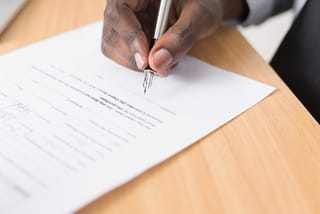A logo creates a reputation for your business that consumers can recognise. Thus, when you have worked hard to promote that reputation, it is frustrating when a competitor copies your logo. Fortunately, if you have registered your logo as a trade mark, options are available to stop that business from using your trade mark. This article will explore the different legal avenues available for you to enforce your registered logo trade mark.
What is a Trade Mark?
A trade mark is a sign or symbol that distinguishes a product or service from other traders in the same industry. Some famous examples include:
- the McDonald’s golden arches;
- the Nike tick; and
- Apple’s apple logo.
Once you register your trade mark, you gain an exclusive right to use your logo in connection with the types of goods and services you claim in your application. Therefore, if someone uses a substantially identical or a deceptively similar logo for similar goods or services, this may amount to trade mark infringement.
What Does Substantially Identical Mean?
You must compare two marks side-by-side to decide whether they are substantially identical. The assessment takes into account the similarities or differences in their essential features.
What Does Deceptively Similar Mean?
Deceptive similarity can be difficult to determine. First, the overall impression of your logo is compared to the other trade mark, taking into account visual, phonetic and conceptual similarities. The trade mark is “deceptively similar” if the average consumer would be likely to confuse the two.

Your business’ brand represents your values, identity and reputation. Learn how to create a successful brand and protect it.
What Can I Do If There is Trade Mark Infringement?
To establish that another company is infringing your logo trade mark, you will need to be able to show that you have registered trade mark rights in the logo. A trade mark lawyer can help you determine the best strategy. They can then look at the nature of the infringement, and may recommend one or more of the following methods below.
1. Sending a Cease and Desist Letter
This is a common first step that intellectual property (IP) owners take when there has been an infringement of their IP. It is a low-cost step that avoids a significant legal dispute. A cease and desist letter should:
- set out details about your trade mark;
- detail the suggested infringement; and
- include a ‘call to action’ (in other words, what you want the other business to do).
Before sending the cease and desist letter, consider:
- how the other business infringed your IP;
- the effect it has had on your business; and
- what steps you want the other side to take to stop the infringing conduct.
If the letter does not achieve your desired outcome, you may want to escalate matters to court.
2. Alternative Dispute Resolution
In many cases, resolving trade mark disputes without going to court is both preferable and feasible. Alternative Dispute Resolution (ADR) methods such as mediation, arbitration, or expert determination can be effective ways to handle such conflicts. Mediation involves a neutral third party who facilitates discussions between you and the infringing party to help you reach a mutually acceptable agreement. It is a collaborative process that emphasises finding a solution rather than assigning blame.
Arbitration, on the other hand, involves a neutral arbitrator who listens to both sides and then makes a binding decision on the dispute. This process is more formal than mediation but typically less so than court proceedings. Expert determination is another ADR method where an independent expert in trade mark law reviews the dispute and provides a binding decision. This method is often chosen for its speed and the expert’s specialised knowledge.
When considering ADR, you should consult with a trade mark lawyer who can guide you through the process and help you choose the most appropriate method for your specific situation.
3. Court Case
Taking a matter to court is expensive and time-consuming. Additionally, you may first have to take preliminary steps to resolve the issue. These include:
- sending a letter of demand; or
- pursuing ADR such as mediation, arbitration or expert determination.
A letter of demand is quite similar to a cease and desist letter. It advises the infringer of your IP rights and demands they halt their conduct. If you have engaged in ADR, you can also illustrate to the court that you have tried to resolve the dispute with limited success.
During litigation, you will first have to prove that the other business’s logo is substantially identical or deceptively similar to your trade mark. Furthermore, you must show that the business used the logo in connection to similar goods or services to those covered by your trade mark registration. If you can establish this, the court has the power to stop the business from using the logo or other branding material. Additionally, they may order the business to pay you compensation or the profits they obtained from using the infringing logo.
Continue reading this article below the formKey Takeaways
A logo can become an invaluable asset to your business. To protect your rights to use your logo, you should register your logo as a trade mark. This gives you exclusive rights to use that logo in its registered class of goods or services. If another business is using a logo similar to yours for similar goods or services, they may be infringing your trade mark rights.
If another business has copied your logo, our experienced IP lawyers can help as part of our LegalVision membership. For a low monthly fee, you will have unlimited access to lawyers to answer your questions and draft and review your documents. Call us today on 1300 544 755 or visit our membership page.
Frequently Asked Questions
A trade mark is a sign or symbol that distinguishes a product or service from other traders in the same industry.
A cease and desist letter instructs a party infringing your copyright to refrain from doing so. It should include details about your trade mark, how the other party has infringed your copyright, and what you want the other party to do.
We appreciate your feedback – your submission has been successfully received.











